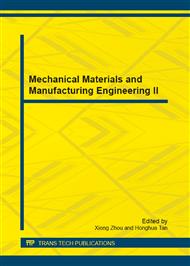p.516
p.521
p.527
p.533
p.539
p.545
p.551
p.555
p.561
Computational Study on Influence of Water Injection Angle to Aluminum/Water Reaction Motor
Abstract:
In Aluminum/Water Reaction Motor chamber, water injection angle plays an important role on mixture of aluminum particle fuel and water droplets and can affect motor performance further. On the basis of FLUENT software and taking phase transition and reaction between water droplets and aluminum particles into account, numerically simulated cases of different water injection angles by Particle Stochastic Trajectory Model. Computed total evaporation rate of water droplets, reaction rate of aluminum particles and specific impulse for the motor. Furthermore judged injection angle effect from these parameters. By comparison and analysis, it is found that hybrid injection case could get best multi-phase mixture effect and specific impulse performance for the motor. Namely axial injection angle with 45°in the main chamber and tangential injection angle with 60°in the afterburning chamber is the best case. The conclusion could provide a new idea for motor working process design.
Info:
Periodical:
Pages:
539-544
Citation:
Online since:
December 2012
Price:
Сopyright:
© 2013 Trans Tech Publications Ltd. All Rights Reserved
Share:
Citation:


